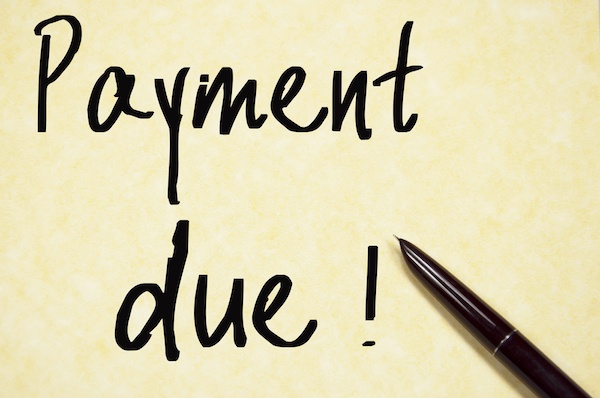IMPORTANT UPDATE FOR 2021:
Congress has approved an extension of the PPP loan program until June 30, 2021, including “second draw” PPP loans for businesses that received PPP funding in 2020.
In this 4-minute read:
- Why you should still consider a PPP loan
- Caveats and downsides to a Paycheck Protection Program loan
- Where you can still apply for a PPP loan
- Other sources of emergency business funding
The $2 trillion CARES act of 2020 included several measures intended to support America’s businesses and employees through the COVID-19 pandemic. The most well-known of these, particularly where small businesses are concerned, is the Paycheck Protection Program (PPP) loan.
The first round of PPP funding ran out quickly… within a couple of weeks of the opening of applications. Due to the incredible demand from small business owners, Congress passed a bill approving a re-funding of the PPP and EIDL (Economic Injury Disaster Loan) programs under the CARES Act on Thursday, April 23, and President Trump signed the bill on Friday, April 24, 2020. This money was exhausted as well, and congress approved an extension of the PPP program in late December, 2020. President Biden signed the PPP Extension Act on March 30, 2021, which extended the deadline for applications being submitted to the SBA to May 31, 2021.
Womply has made email marketing truly automatic for busy small business owners and all types of independent contractors. Learn more, plus get free reputation monitoring and customer insights when you sign up for Womply Free!
The initial $350 billion allotment was spoken for so quickly that it was initially feared that the $320 billion in additional funding would be spent similarly. However, for various reasons, demand for the PPP loan slowed, with many business owners skeptical of the process, the loan, or other factors. Let’s go over the pros and cons of the PPP loan program and a few reasons why you should still consider applying for your PPP loan.
Top 5 reasons you should consider applying for a PPP loan
1. PPP loans can be 100% forgiven if you play your cards right
Since the intent of the PPP program was to save as many of America’s small businesses and jobs as possible, a key attribute of a PPP loan is that it was designed to be forgivable.
That is, if you adhere to the requirements of PPP loan forgiveness, you won’t have to pay back the loan… ever! It’s difficult to say no to free money.

Yes, there are specific guidelines you must follow and you need to know how to spend your PPP funding and keep accurate records, but really, there’s never been anything short of someone handing you a blank check that makes more sense for small businesses suffering severe financial strain.
IMPORTANT UPDATE: On June 3, 2020, the Senate passed updates to PPP loan forgiveness requirements, extending the covered period to 24 weeks, and reducing the minimum loan funding that must be spent on payroll to 60%. Please read the details here.
For 2021, it’s even easier to achieve 100% loan forgiveness, especially for smaller loans and businesses/contractors without employees. Read the details here: do PPP loans have to be repaid?
2. PPP loans require no collateral and no personal guarantee
Can you think of another business loan, other than from Vinnie the neighborhood loan shark, that doesn’t require any collateral? As long as you run a legitimate American business with fewer than 500 employees, chances are that you qualify for a PPP loan.
You can read about ineligible businesses here. But even sole proprietors, independent contractors, and self employed individuals can qualify for PPP loans, as can some types of non-profits and faith-based organizations.
3. The PPP interest rate is crazy good
Initially the Treasury and SBA set the interest rate at 0.5%, but it was later raised to… wait for it… a horrific 1% interest rate. Yes, that was sarcasm. NOBODY is going to give you a business loan with an interest rate that low—except the federal government.
What’s more, repayment of the loan is deferred until you receive approval from the SBA on your application for loan forgiveness (previously payments were deferred for 6 months from receipt of PPP loan funds). So even if you DO end up having to pay some or all of your loan back, you have up to 10 months during which you don’t have to worry about that.
(Note: interest does still accrue during the grace period—at 1%. Also, if you fail to apply for loan forgiveness within 10 months from the end of your covered period, you’ll have to pay interest, fees, and principal starting 10 months after the last day of your covered period.)
4. The Paycheck Protection Program favors smaller businesses, and funds are still available
Due to the speed at which the initial $350 billion in PPP funding evaporated, loaned to approximately 1.6 million businesses, the Treasury and SBA revised their lending requirements, expanded their list of eligible business types, and placed a maximum amount of PPP funding per lender.

Whether due to these modifications or due to the growing social pressure to justify a PPP loan, demand has appeared to slow somewhat, and there is still a large portion of PPP funding available.
For 2021, there has been even more emphasis on helping the “little guy,” with early application windows for underserved areas and increased focus on small, women, veteran, and minority-owned businesses using local community lenders.
Read full details on the 2021 update here: What the 2021 PPP update means for women, minority, and veteran-owned businesses.
5. You can use PPP funding for any legitimate business expense
While the rules of PPP loan forgiveness speculate that you must spend at least 75% of your PPP loan (now 60%; see important update here) on maintaining your payroll and the rest on specific expenses like business rent and utilities, that restriction is only applicable for PPP funds for which you intend to apply for forgiveness.
In other words, if you look at the PPP funds as a short-term, low-interest business loan, it still makes sense in many cases, even if you don’t apply for forgiveness and have to pay it all back (at 1% interest).
Learn the full details in our PPP FAQ and answer the question: Do PPP loans have to be repaid?
Now that we’ve given you the good news, let’s cover some of the potential downsides of a PPP loan.
Top 5 reasons a PPP loan may not be right for you and your business
1. It’s complicated to apply for a PPP loan
As you can imagine, applying for a Paycheck Protection Program loan is not the easiest thing in the world. Business loans in general are not easy to apply for, and when you get the government involved… well, you can see the potential for lots of red tape.
There are many specific requirements for documentation for PPP applications but most of the items are records you should be gathering and organizing anyway as part of your annual business tax filing process.
Still, with all the various SBA-approved lenders and their individual requirements, and the fact that the Treasury and SBA keep updating the rules, means that getting your application submitted and approved can feel something like a moving target.

In fact, some larger banks stopped accepting PPP loan applications because it was so much work and the fees the government pays lenders are simply not worth it.
(It’s free for every business to apply for a PPP loan, so if someone wants to charge you for “facilitating your loan application,” find another organization to work with.)
Still, with the simplified application process for 2021 and easier forgiveness for independent contractors, sole proprietors, and self employed individuals without employees, there’s really no reason not to apply. When you apply via Womply it takes between 5 and 30 minutes, and it could mean many thousands of completely forgivable PPP stimulus money for you when you need it most.
2. You have to apply for PPP loan forgiveness, and must pay the loan back if you don’t spend it properly or keep accurate records
Some people might expect that a loan designed from the outset to be forgivable would be automatically forgiven, but that’s not the case with the PPP loan.
You need to fill out the PPP loan forgiveness form and include accurate records demonstrating that you spent the funds on approved expenses and payroll. Lenders have 60 days to notify you of your PPP loan forgiveness approval or rejection.
Read more: What do I need to do to get my PPP loan forgiven?
3. You only have 2 years to repay the PPP loan in full (UPDATE: NOW 5 YEARS)
While the 1% interest rate is awesome, the 24-month loan maturity date isn’t. You only have 2 years to repay any outstanding, non-forgiven funds in full. (This has now been extended to 5 years. Read about the changes here.)
However, since you are only allowed to borrow a limited amount of funds based on your average monthly payroll, it’s anticipated that most businesses will be able to cover the repayment if they are unable to qualify for full or partial loan forgiveness.

4. You may only borrow a maximum of 2.5X your average monthly payroll (FOR 2021, SOME CAN QUALIFY FOR 3.5X)
FREE MONEY has the selling power of free beer at a Garth Brooks concert, but unfortunately you can’t borrow a bazillion dollars and have the loan forgiven.
The PPP loan (initially) only covered 8 weeks of expenses. NOTE: The time you have to spend your PPP funding has now been extended for up to 24 weeks after the date your loan is funded. Read details here.
So, for truly small businesses, 8 weeks worth of expenses may not seem worth the trouble of applying for the loan and/or applying for forgiveness (though we believe it’s definitely worth it). On the other hand, that’s a at least a couple months’ worth of revenue that you don’t have to worry about generating, and for small businesses in crisis, that can be a real lifesaver.
IMPORTANT NOTE: for 2021, businesses with NAICS codes that start with 72 (food and accommodation businesses) can apply for 3.5X their monthly average for second draw PPP loans only.
5. If you borrow more than $2 million, you will probably get audited
Due to public outcry about hugely successful, publicly traded businesses getting PPP loans (some of which have returned the funding after “reconsidering their needs” *cough*), the Treasury and SBA have released new directives regarding which businesses may or may not be audited as a result of receiving PPP loans.
Secretary of the Treasury Steve Mnuchin said on April 28, 2020 that all PPP loans over $2 million will be subject to a government audit prior to determining if they qualify for any loan forgiveness.
IMPORTANT NOTE: On Wednesday, May 13, 2020, the SBA released revisions to their FAQs regarding PPP loan forgiveness and which businesses are most likely to be audited. Read the details here.
In general, it’s prudent to assume that the government may audit any business that receives a PPP loan. Therefore we strongly recommend that you keep good records about your eligibility, the economic circumstances you are facing, loan size calculations, uses of your loan funds, and any requests for forgiveness.
If you have questions about any of these topics that aren’t answered by the SBA’s PPP FAQs and rules then you should contact your legal and/or accounting advisors.
Go deeper: Will my business be audited if I receive a PPP loan?
You may also like: How do I limit my business’s liability during and post COVID-19?
Win new customers and build loyalty with your existing customers with Womply Email Marketing
Womply has made Email Marketing truly automatic for busy small business owners, independent contractors, and sole proprietors. Womply helps you turn customers into regulars and get more repeat business with targeted emails that send automatically when customers transact with you. Build customer loyalty and revenue, and get more repeat business with just a few clicks!
Learn more, plus get free reputation monitoring and customer insights when you sign up for Womply Free!